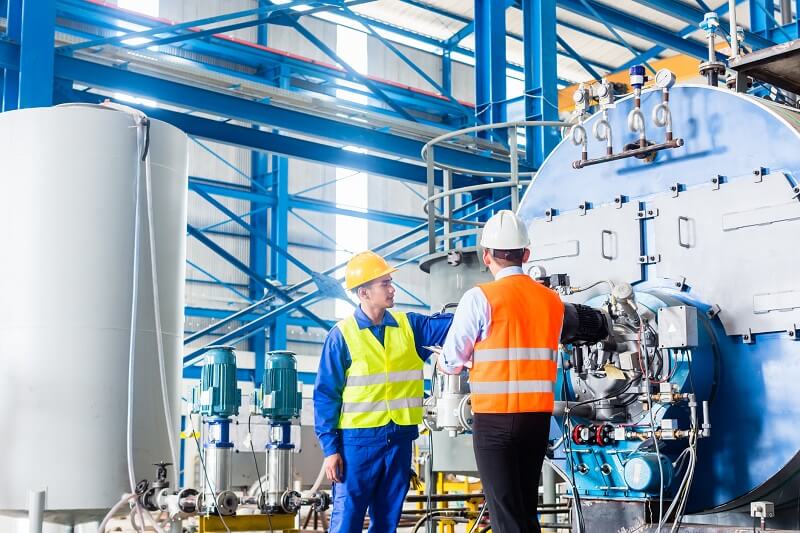Industrial equipment and machinery require regular maintenance and cleaning; however, the complex nature of the equipment and the cleaning process often prevents this from happening. Typically, the plant must shut down completely while maintenance and cleaning are conducted.
Planning plant shutdowns eliminates risk, unexpected costs, and significant operational disruptions. While no one wants to shut down operations, planned or otherwise, not keeping up with a regular maintenance and cleaning schedule can result in unexpected shutdowns. It is a risky plan that rarely works out well for facilities.
Unexpected shutdowns are not only a safety hazard, but they can also damage equipment and significantly impact performance and a company’s bottom line—it’s a problem that no one wants to have. By scheduling regular, planned plant shutdowns to complete facility maintenance and cleaning, conducted internally or with the assistance of plant shutdown services, industrial plants can reduce downtime, extend equipment life, and do so without compromising safety.
Why Planned Shutdowns Matter
Planned shutdowns are precisely what they sound like — the industrial facility plans a week or two to complete all necessary cleaning and maintenance on its equipment and machinery.
Similarly, unplanned shutdowns also sound like what it’s called. Unplanned shutdowns happen when a piece of equipment malfunctions, breaks, or a safety concern is identified that requires all operations to stop immediately. These typically occur when a facility has not completed a planned maintenance shutdown.
Reactive Maintenance is Costly and Time-Consuming
When a planned shutdown isn’t completed, a facility is forced to conduct reactive maintenance, which means the part that broke or malfunctioned needs to be immediately replaced or repaired. Assuming the facility knows precisely what’s gone wrong and how, and that parts can be immediately sourced, the shutdown may not be that long. That’s rarely the case, however, which means it will take time to investigate the cause, get parts, clean, replace, or repair. Overall, an unexpected shutdown will have a significant impact on the bottom line, as productivity and operations come to a complete halt.
Impact on Otherwise Functional Equipment and Parts
Additionally, an unplanned shutdown resulting from equipment failure or malfunction can impact other parts that might not have otherwise been affected had a planned maintenance occurred. This can increase maintenance costs and impact a facility’s overall profitability, as it will have to stop operations until the issue is fixed. Consider the unpredictability of an unplanned shutdown versus planning for the price of plant shutdown services— something that can be budgeted for, planned, and used efficiently.
Compliance Protocol
Industrial plants must adhere to various compliance protocols to ensure the safety of the crews and promote operational efficiency. Adhering to industry standards and compliance protocols associated with industrial facilities means that regular planned maintenance should be a part of the plant’s operational calendar. Compliance with OSHA, EPA, NFPA, ISO, and other relevant standards is necessary, and failure to comply can result in a range of negative consequences. Negative impacts could include fines and penalties, legal action, damage to reputation, and forced shutdowns or stop-work orders.
Key Components of a Planned Shutdown
Whether hiring plant shutdown services or conducting them internally, a long list of tasks often needs to be completed. Simply performing a shutdown won’t prevent hazardous situations from occurring; shutdowns need to be completed with safety in mind.
Industrial service providers that offer planned shutdown services are skilled at ensuring all safety protocols are followed, thereby eliminating or reducing the risks associated with shutdowns and completing them efficiently to minimize downtime. When planning a plant shutdown, facilities should consider the following components.
Schedule and Communication
Planned shutdowns are often scheduled months or even a year or more in advance. This gives the facility ample time to prepare for the shutdown, ensuring that clients, employees, contractors, and all departments have a plan to handle it. Communication must be clear and timely, and all necessary parties must be included to promote coordination.
Resource Allocation
Another reason planned shutdowns are scheduled so far in advance is for resource allocation. When the entire operation stops, the facility must ensure it has the budget to handle the stoppage of work. If a facility is using plant shutdown services, it must ensure that it can be paid. Employees still need to get paid, equipment still needs to be maintained, and bills must be paid. Ensuring that resources are adequately allocated is not just a key component of a planned shutdown; it’s a necessary one.
Safety Plan

In addition to scheduling, communication, and resource allocation, facilities must ensure that they have the proper safety protocols in place. Lockout/tagout procedures ensure that all machines and equipment can be safely shut down and not accidentally restarted, which is a critical safety component. The plant also needs to ensure that all PPE is available and that safety protocols are followed.
Maintenance and Cleaning Activities During Shutdown
If you use expert plant shutdown services, you can expect that they will deep clean the facility, specifically the production areas. The equipment will be thoroughly cleaned to ensure that proper inspection and testing can be performed. Once the inspection and testing are complete, the facility will be able to perform any required maintenance or repairs on the equipment itself, infrastructure, safety systems, and environmental components, such as wastewater treatment systems or dust collectors. Doing this work independently requires thoroughness and ample documentation. If the facility is audited by safety, governmental, or industry regulators, the plant will need to be able to produce documentation that everything was properly maintained to minimize liability.
Post-Shutdown Evaluation
Because plant shutdowns are such critical operations, it is essential to ensure that processes are completed correctly, effectively, and that they achieve the desired outcome. The only way to ensure that the shutdown went as planned is to conduct an evaluation. Additionally, it will also help improve future shutdowns.
An evaluation not only provides plant managers and relevant staff with a comprehensive understanding of what went well, what could have been improved, and what needs to be addressed next time, but it can also help generate data and analytics about the shutdown, offering insights into the actual performance of the shutdown. Debriefing the team members involved in the shutdown can also provide a personal perspective on how the process went from a personnel standpoint.
Plant Shutdown Services for Success
If your facility is planning a shutdown, it might be helpful to consult with plant shutdown services to ensure that everything will be done properly. A well-executed shutdown will enhance the plant’s future performance by improving efficiencies, reducing risks and safety hazards, ensuring compliance, and enhancing cost control. Being proactive when it comes to facility maintenance and cleaning will go a long way in ensuring the longevity of equipment and allowing the plant to operate with better success. If you’re a plant manager interested in implementing a strategic plant shutdown service, contact the team at Environmental Remedies for a free quote identifying how we can help your industrial business.






